
The ancient Egyptians had an elaborate set of funerary practices that they believed were necessary to ensure their immortality after death. These rituals included mummifying the body, casting magic spells, and burials with specific grave goods thought to be needed in the afterlife.

The opening of the mouth ceremony was an ancient Egyptian ritual described in funerary texts such as the Pyramid Texts. From the Old Kingdom to the Roman Period, there is ample evidence of this ceremony, which was believed to give the deceased their fundamental senses to carry out tasks in the afterlife. Various practices were conducted on the corpse, including the use of specific instruments to touch body parts like the mouth and eyes. These customs were often linked with childbirth, which denoted rebirth and new beginnings. For instance, cutting bloody meat from animals as offerings for the deceased signified the birthing process, which typically involves blood, and represented the commencement of a new life. Additionally, tools like the peseshkef, which resembled the tail of a fish and were originally employed for cutting infants' umbilical cords, further emphasized the idea of "rebirth".

Tomb TT280, located in Sheikh Abd el-Qurna, part of the Theban Necropolis, is the burial place of the ancient Egyptian noble Meketre who was chancellor and chief steward during the reign of Mentuhotep II and Mentuhotep III, during the Eleventh Dynasty.
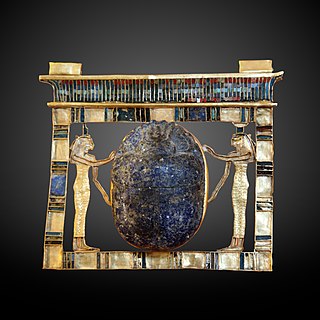
Paser was an ancient Egyptian noble who served as vizier during the reigns of Seti I and Ramesses II in the 19th Dynasty. He would later also become High Priest of Amun.

Menhet, Menwi and Merti, also spelled Manhata, Manuwai and Maruta, were three minor foreign-born wives of Pharaoh Thutmose III of the Eighteenth Dynasty. They are known for their lavishly furnished rock-cut tomb in Wady Gabbanat el-Qurud near Luxor, Egypt. They are suggested to be Syrian, as the names all fit into Canaanite name forms, although their ultimate origin is unknown. A West Semitic origin is likely, but both West Semitic and Hurrian derivations have been suggested for Menwi. Each of the wives bear the title of "king's wife", and were likely only minor members of the royal harem. It is not known if the women were related as the faces on the lids of their canopic jars are all different.

Hornedjitef was an ancient Egyptian priest in the Temple of Amun at Karnak during the reign of Ptolemy III. He is known from his elaborate coffins, mummy mask and mummy, dating from the Early Ptolemaic Period and excavated from Asasif, Thebes, Egypt, which are all held in the British Museum. These related objects were chosen as the first of the hundred objects selected by British Museum Director Neil MacGregor in the 2010 BBC Radio 4 series A History of the World in 100 Objects.
Nauny or Nany was an ancient Egyptian princess during the Twenty-first Dynasty, probably a daughter of High Priest, later Pharaoh Pinedjem I. The name of her mother, Tentnabekhenu is known only from Nauny's funerary papyrus.
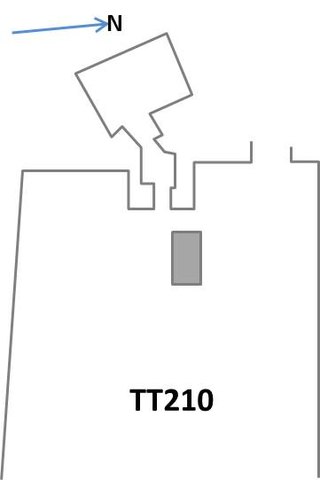
The Theban Tomb TT210, part of the Theban Necropolis, is located in Deir el-Medina, on the west bank of the Nile, opposite to Luxor. TT210 is the burial place of the ancient Egyptian artisan named Raweben, who lived during the 19th Dynasty. Raweben would have lived in Deir el-Medina during the reign of Ramesses II.
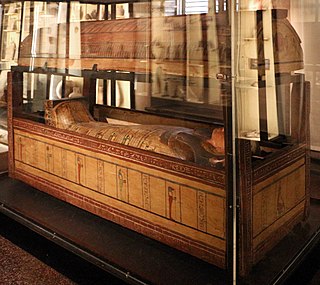
Tjesraperet was the wet nurse of a daughter of the Nubian king Taharqa. She is mainly known from her burial which was found undisturbed.

QV71 is the tomb of Bintanath, the daughter and Great Wife of Ramesses II, in Egypt's Valley of the Queens. It was mentioned by Champollion and Lepsius, and later excavated by Ernesto Schiaparelli.

The Theban Tomb known as MMA 57 is located in Deir el-Bahari. It forms part of the Theban Necropolis, situated on the west bank of the Nile opposite Luxor. The tomb is likely the burial place of the Ancient Egyptian Harwa.
The Theban Tomb known as MMA 60 is located in Deir el-Bahari. It forms part of the Theban Necropolis, situated on the west bank of the Nile opposite Luxor. The tomb is the burial place several high ranking individuals dating to the 21st Dynasty.

The Theban Tomb known as MMA 507 is located in Deir el-Bahari. It forms part of the Theban Necropolis, situated on the west bank of the Nile opposite Luxor. The tomb is the burial place of approximately 60 slain soldiers dating to the 12th Dynasty.

The Theban Tomb known as MMA 59 is located in Deir el-Bahari. It forms part of the Theban Necropolis, situated on the west bank of the Nile opposite Luxor. The tomb is the burial place of the Ancient Egyptian Henuttawy, who dates to the 21st Dynasty and was a Singer of Amun.

The Theban Tomb of Neferkhawet MMA729 is located in El-Assasif, Theban Necropolis. The tomb contained the burials of Neferkhawet, his wife Rennefer, his son Amunemhet, his daughter Ruiu, and his son or son-in-law Bakamun called Baki. Neferkhawet was a scribe and keeper of the documents during the Thutmosid period.
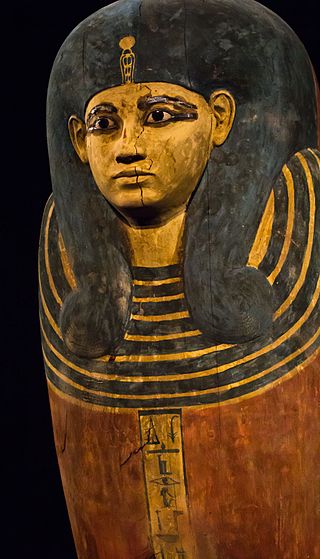
The Theban Tomb TT358 is located in Deir el-Bahari, part of the Theban Necropolis, on the west bank of the Nile, opposite to Luxor. The tomb belongs to the king's wife Ahmose-Meritamun, the sister and the wife of Pharaoh Amenhotep I. The tomb was later used for the additional burial of the King's daughter Nany, who was a daughter of Pharaoh Pinedjem I.
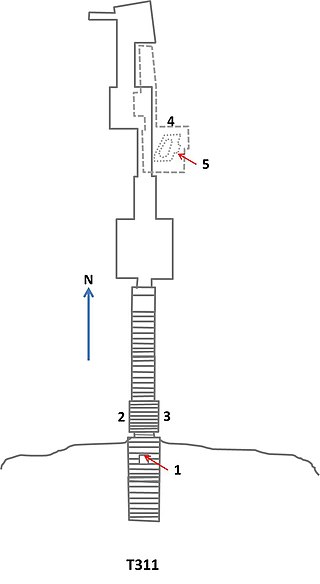
The Theban Tomb TT311 is located in Deir el-Bahari, part of the Theban Necropolis, on the west bank of the Nile, opposite to Luxor. The tomb belongs to the Seal-bearer of the King of Lower Egypt named Kheti. The tomb was excavated by Winlock during the 1923 excavations on behalf of the Metropolitan Museum of Art. Kheti had a tomb near the funerary temple of king Mentuhotep II. The tomb was found heavily destroyed but there are still many remains of reliefs showing that it was once decorated. The burial chamber was better preserved and was also decorated.
The Theban Tomb TT414 is located in El-Assasif, part of the Theban Necropolis, on the west bank of the Nile, opposite to Luxor. The tomb was originally constructed in the El-Assasif necropolis for the use of Ankh-hor and his family. Ankhor was the Chief Steward to the God's Wife Nitocris during the 26th Dynasty. Ankh-hor is dated to the reigns of Pharaohs Psamtik II and Apries. The tomb was later usurped during the 30th Dynasty and the Ptolemaic Period.
Theban Tomb TT72 is located in the Theban Necropolis, on the west bank of the Nile, opposite to Luxor. It was the tomb of Re, who was the First Prophet of Amun in the Mortuary temple of Thutmosis III. The tomb is located in the necropolis area around Sheikh Abd el-Qurna and dates to the time of Amenhotep II.




















